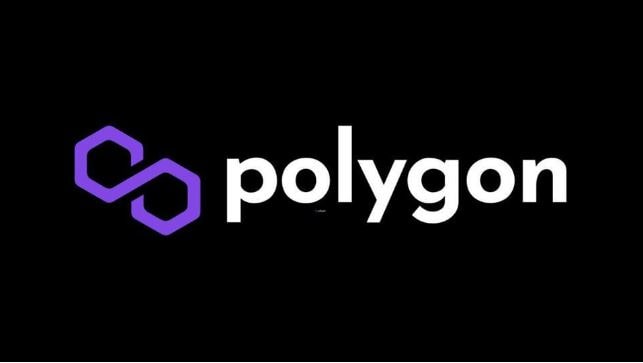Polygon Blockchain Guide – Everything You Need to Know

Introduction
The world of cryptocurrency has been abuzz with improvements, and one call that has been making enormous waves is "Polygon." In this text, we can take a deep dive into what Polygon blockchain is, the way it works, and why it’s taken into consideration a recreation-changer in the crypto space.
What is Polygon?
A Brief Overview
Polygon, formerly known as Matic Network, is a layer 2 scaling solution for Ethereum. It is designed to deal with some of the fundamental troubles with the Ethereum network, mainly scalability, high fuel prices, and gradual transaction instances.
The Need for Scalability
Ethereum, the second-largest blockchain by marketplace capitalization, has faced scalability demanding situations. As more decentralized packages (DApps) and users joined the network, it became congested, leading to slower transactions and soaring gasoline costs. Polygon aims to solve these problems.
How Does Polygon Work?
Layer 2 Scaling
Polygon achieves scalability by creating a layer 2 solution that operates alongside the Ethereum mainnet. It offers numerous sidechains, each with its particular functions and skills. These sidechains are like minded with Ethereum, permitting users to transport property seamlessly among the two networks.
Proof of Stake
One of the important thing features of Polygon is its use of a Proof of Stake (PoS) consensus mechanism. This is in contrast to Ethereum’s present day Proof of Work (PoW) mechanism. PoS is more strength-green and gives quicker transaction confirmation instances.
Advantages of Using Polygon
Low Transaction Costs
With Polygon, users can enjoy significantly lower transaction fees compared to the Ethereum mainnet. This makes it more cost-effective for conducting various operations, including transferring assets and interacting with DApps.
High Throughput
Polygon’s multiple sidechains enable high throughput, allowing it to process a large number of transactions per second. This is a crucial factor for DApps that require quick and efficient processing.
Enhanced Security
Polygon maintains a strong connection to the Ethereum mainnet, benefiting from its security while offering additional layers of security on its sidechains.
Use Cases of Polygon
Decentralized Finance (DeFi)
Polygon has observed enormous use within the DeFi zone, where it presents a scalable and fee-effective platform for numerous economic services like lending, borrowing, and buying and selling.
Non-Fungible Tokens (NFTs)
The NFT craze has also embraced Polygon due to its low fees and fast confirmation times. Artists and collectors prefer Polygon for minting and trading NFTs.
The Future of Polygon
Continued Growth
Polygon’s popularity keeps to upward push, with extra DApps and initiatives integrating with its surroundings. Its ability to scale Ethereum is probably to play a vital function within the future of blockchain generation.
Ecosystem Development
The Polygon team is actively working on expanding the ecosystem and improving interoperability with other blockchains, ensuring its relevance in the evolving crypto landscape.
The Polygon Ecosystem
Polygon’s success can be attributed to its vibrant and diverse ecosystem. Let’s take a closer look at some of the key components:
1. Polygon POS Chain
The Polygon Proof of Stake (PoS) chain serves as the heart of the ecosystem. It secures the network through staking and consensus mechanisms, ensuring reliability and security.
2. Polygon SDK
The Polygon Software Development Kit (SDK) empowers developers to create custom chains and DApps with ease. This flexibility has led to a proliferation of innovative projects within the Polygon ecosystem.
3. Polygon Bridge
The Polygon Bridge acts as a gateway between the Ethereum mainnet and Polygon. It enables users to seamlessly transfer assets between the two networks, fostering interoperability.
4. Polygon PoA Chain
The Polygon PoA (Proof of Authority) chain provides high-speed, low-cost transactions, making it ideal for microtransactions, gaming, and other use cases.
5. Polygon Blockchain Avail
Polygon Avail is a decentralized file storage solution designed to integrate seamlessly with Polygon’s ecosystem, facilitating data storage for DApps.
6. Polygon Validator DAO
The Polygon Validator Decentralized Autonomous Organization (DAO) governs the network’s validators, ensuring decentralization and security.
Conclusion
In summary, Polygon blockchain is a first-rate answer that addresses the scalability and efficiency problems faced through the Ethereum network. Its low transaction fees, high throughput, and seamless integration with Ethereum have made it a favorite among builders and customers alike. As the crypto global evolves, Polygon is poised to play a vast role in shaping its destiny.
FAQs
1. Is Polygon a separate blockchain or a layer on Ethereum?
Polygon is a layer 2 scaling solution that operates alongside the Ethereum mainnet, offering additional scalability and functionality.
2. How does Polygon achieve low transaction costs?
Polygon’s low transaction prices are made possible by way of its Proof of Stake (PoS) consensus mechanism, that is greater energy-efficient than Ethereum’s Proof of Work (PoW).
3. Can I use Polygon for NFT transactions?
Yes, many NFT artists and collectors prefer Polygon for minting and trading non-fungible tokens (NFTs) due to its low fees and fast confirmation times.
4. What are some notable projects built on Polygon?
Several DeFi projects like Aave and QuickSwap, as well as NFT platforms like OpenSea, have integrated with Polygon to leverage its scalability and cost-effectiveness.

